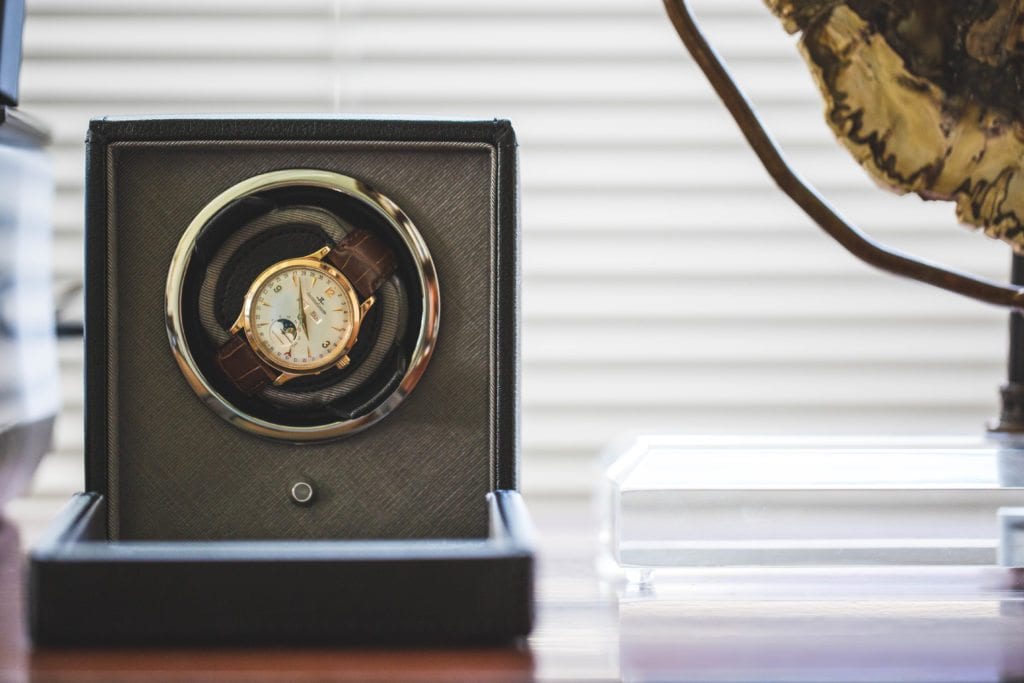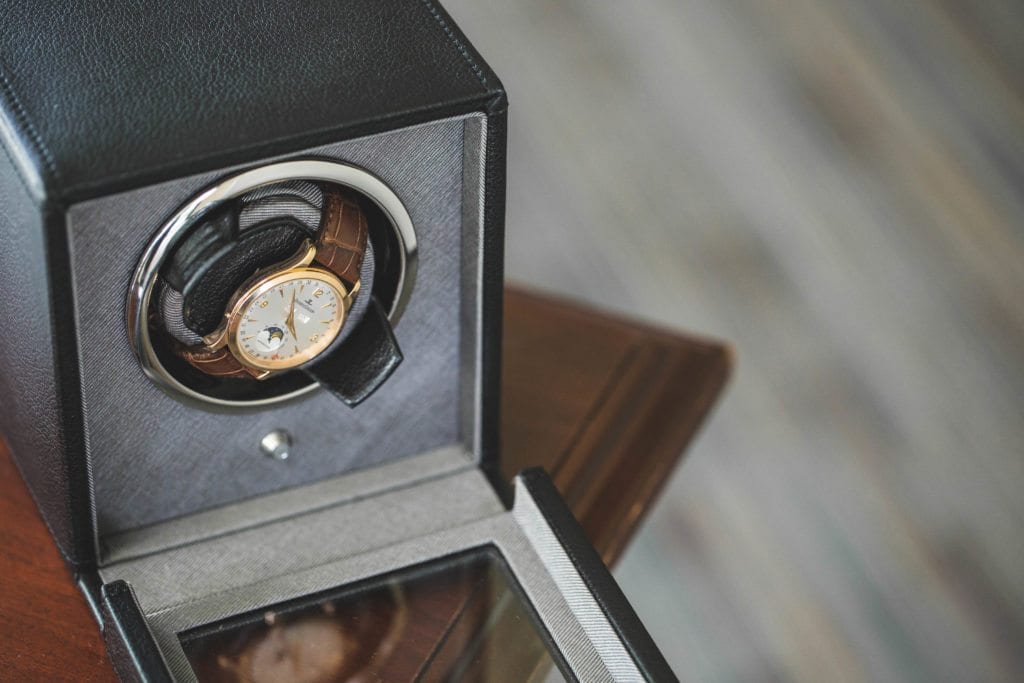How to Use a Watch Winder
We’re big advocates of properly taking care of your watch, and sometimes, that means making an investment in your investment. If you’re not the type to wear a watch every day or you have a collection of watches that trade-off wrist time, a watch winder is an essential tool. A quality watch winder operating at the proper setting is one of the best ways to maintain a watch’s accuracy for a long time. Learn more from Crown & Caliber.

How Does a Watch Winder Work?
If you have automatic or self-winding watches, it’s good to have a tool like a watch winder. However, you may be wondering, how does a watch winder work? A watch winder helps to keep your watches running when you’re not wearing them. When you don’t wear an automatic watch daily and keep it in motion, it will stop. If an automatic watch is left stopped for an extended period of time, it can become damaged. Think of a car sitting in a garage for years without being driven. Similarly, a watch needs to remain wound and running to keep it working correctly. Using a watch winder is one of many steps you can take to ensure the longevity of your timepieces. It allows you to properly care for and store your watches when you’re not enjoying them on your wrist.
Ideally, you want your watch running at the top 3/4 of its mainspring all the time. This is true whether it’s on your wrist or in the winder. It helps to prevent wear on the clutch. In an automatic watch, that mainspring requires about 80% to 90% tension to be considered fully wound. Normal activity only winds the mainspring 50% to 60%. A watch winder will keep your watch wound at around 80%.
Winding and Placing the Timepiece
Now you understand how a watch winder works in terms of keeping your timepiece running in top shape. Yet, you may still be questioning, how does a watch winder work in operation? After you purchase a watch winder, there are a few simple steps you need to follow to begin using it. First, you cannot place a stopped watch in a watch winder. So, if your watch has totally stopped, you’ll need to manually wind it. To do so, remove the watch from its box or your wrist. Then, locate the crown and unscrew it until it’s in the first position. Turn the crown clockwise for about 20 to 40 turns or until you feel resistance. However, keep in mind that unlike a manual timepiece, you can’t overwind an automatic timepiece. Once you’ve finished winding, press the crown back in place.
Now, it’s time to place your watch in the winder. First, remove the cuff from the watch winder and begin to situate your timepiece on the cuff. Then, you’ll want to flip the cuff over, compress the foam, and clasp the watch securely on the cuff. Finally, put the cuff back inside the winder.
The Optimal TPD
Next, you’ll need to set the TPD. TPD stands for turns per day, or how many full revolutions the winder turns in a 24-hour period. For every watch, there’s a magic number of turns per day to keep it running at its best. Too little TPD, and it doesn’t wind fully. Too many, and you risk wearing it out. The manufacturer should specify the exact number of TPD your watch needs in your manual, and a good watch winder will give you options on setting the TPD. If you can’t find your watch’s TPD or your winder doesn’t have the option to set the TPD, don’t worry. Most automatic watches need around 650 TPD. This will generally be the default setting.

Turning Direction
You’ll also need to set the turning direction. Most watches can wind bi-directionally. It’s self-explanatory enough, but having a bi-directional watch winder means that every time the winder cycles on, it turns in a different direction. The majority of watches are just fine in a bi-directional winding unit. However, some watches have different specifications, like clockwise or counterclockwise. A good watch winder will have all three settings available.
Start Winding
After setting the TPD and turning direction, it’s time to turn the winder on. Over the next few days, be sure to check your watch periodically to make sure it’s keeping accurate time. If for some reason your watch is not keeping accurate time, you may need to adjust the TPD or direction. If your watch isn’t keeping time after making adjustments, you may need to take it to a trusted watchmaker.
Watches with Power Reserves
A lot of luxury watches have a built-in power reserve that keeps the watch running for a set amount of time when you’re not wearing it. A good watch winder will keep this in mind with its design. It will allow you to set a start delay for a watch that you’ve recently worn. The start delay lets the power reserve run down before the winder starts its cycle. This ensures the watch isn’t over-wound over time.
Magnetization
Magnetic interference can make some watches run fast, requiring a demagnetizer to correct them. Opinions vary on the minimum level of magnetic flux density needed to affect watch operation. However, informal consensus online suggests the range is 60-70 gauss. We tell you this because with a watch winder, there’s a very minimal risk that your watch could be magnetized. A quality watch winder will have a shielded motor. This will prevent its copper spool from transferring a magnetic field to your watch when it’s running.

Warranty
A good watch winder will generally be quieter when it’s running. This means that the motor won’t be grinding or whining when in operation. A quality watch winder should last you a while. However, if you do experience issues in the first few years, many companies will have warranties that cover you.
Not all watch winders are equal. They’re definitely not all the same quality, so be sure to invest in a good winder. Do that and the winder and your watch should last a long time.
Get More Articles Like This in Your Inbox
We're constantly creating great content like this. So, why not get it delivered directly to your inbox? By subscribing you agree to our Privacy Policy but you can unsubscribe at any time.






